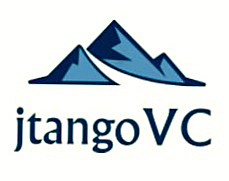Like many VCs, I’ve long admired Fred Wilson and what he and his team at USV have built. I think his post today is very important, which is why I’d like to highlight it.
Fred is writing about recently-announced data from the National Venture Capital Association and a comment from NVCA President Mark Heesen:
The venture capital fundraising environment has settled into a ‘new normal’ which is characterized by a barbell structure of larger funds which are stage and industry agnostic on one end, and smaller, early stage, industry or region specific funds on the other.
Fred captures, IMO, really important implications to entrepreneurs of this “new normal”:
There are a ton of options out there for early stage funding. And if you get to the stage where you need a growth round from a big fund, there are plenty of options for that too. But if you are looking for a Series B round to help you grow from early revenue status to true growth status, you are going to find that challenging….
The truth is early stage investors are often asked to be the funders of last resort for the “in between” stage…. So choose your early stage investors well. Make sure they are willing to see you through the in between phase if need be. Because they will probably need to.
Fred’s post made me wonder if the “high volume” seeding strategy can continue given the above realities. As I’ve written in the past, roughly put, there are two VC strategies for early-stage: 1. The “high volume and broad reach” model, where you invest in one round in many companies, and 2. The “low volume and high commitment” approach, whereby a partner invests in one to two new companies a year and “reserves” capital in the fund for future financings for those companies.
IMO, strategy #1 of doing 20 to 50 to 100 investments a year as a firm works best in a rising-tide market. When the market is flush, it’s easier to find a new firm to price the following round and add money to the company. When markets stall, the “insiders” (the existing investors) are asked to do that. And, if your strategy has meant doing a lot of investments and allocating few dollars to each company, it can mean a VC firm may get washed out or the companies themselves may run out of cash.
At Kepha, we follow strategy #2: we budget to invest in each of our companies’ financings. In this type of market, I’m particularly glad we do so.

This is an excellent point and we certainly see that happening in our business too.
Thank you! Hope you are well, Michael.
I’d also add that having a strong syndicate is more important than ever. Going the extra mile at the beginning to get 2-3 strong investors (either early stage VCs, strong angel groups, or exceptionally committed angels) who follow strategy #2 will be a huge asset later on.
I’d say the vast majority of companies in the Series B pickle fall into the trap of having very good results, but not great results. The growth funds cherry pick the ones with great results, so companies with very good results tend to fall short. However, if said company has 2-3 committed investors around the table, their B round is done.